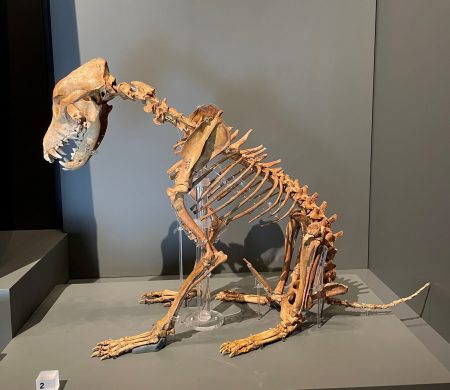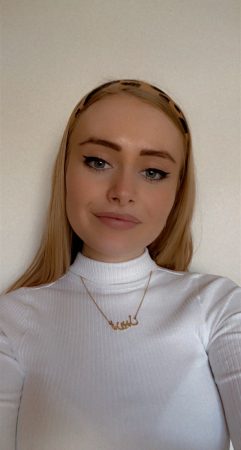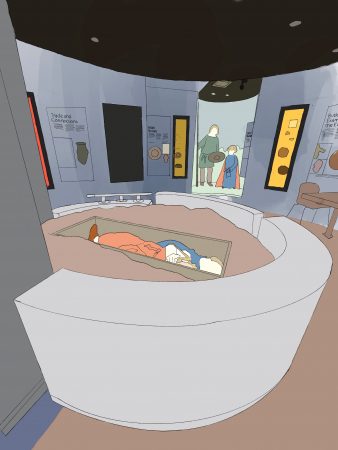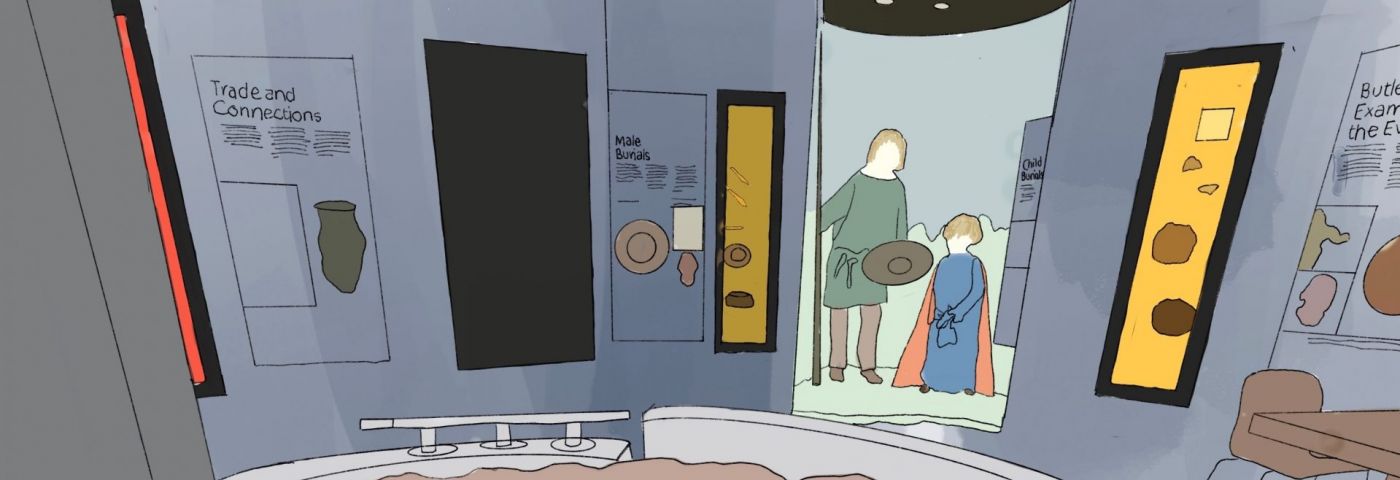Blog by Isobel Chaffey
Isobel Chaffey is a second-year interior design student from the University of Gloucestershire.
I decided to complete my experiential learning placement at the Corinium museum, to gain a better understanding of how exhibits are designed, arranged, and displayed. I also wanted to see for myself, how visitors engaged with the exhibits from an observational perspective.
Throughout my visit, I’ve been looking behind the scenes at how the exhibits have been brought together and how the many, unique artefacts have been displayed within their cases. The new pre-history exhibit is very interesting and well laid out with an interesting colour scheme which fits in very well with the museum. The background images in which the artefacts are displayed are very appropriate and enhance the items, helping the visitor to visualise how they would have been used and or worn.

The Roman exhibits are fun and interesting and encourage people to engage through the interactive pieces, such as the weighing scales. This helps not only youngsters, but adults learn about the roman’s daily life, parts of which have been adapted, yet still feature in our modern lives.
I also have been observing how people move through the museum and how they interact with the exhibits and artefacts. Many people pause to look at the mammoth tusk and the dog skeleton, which captures the attention of many children and helps them to understand and learn more.

Visitors of all ages like to play with the puzzle and mosaic pieces, which helps us all to see how romans assembled these large interior structures. On the first floor, the jewellery pieces are also viewed in depth by visitors. The colours are interesting and the fact that people wore these decorative items approximately two thousand years ago, adds to the fascination of many. Generally, people spend a lot of time between the galleries and have fun learning and viewing all the artefacts found in and around Cirencester.
I did several drawings on the Anglo-Saxon gallery and concept drawings of how, if given the opportunity, I would have designed it. This was useful and helped me to gather more of an understanding of how galleries are put together, especially behind the scenes.
In summary, completing my work experience at the museum has been both enjoyable and educational. Besides learning many interesting facts about the history discovered in the area, I’ve also learnt more about interior and exhibit design. Being inside the museum has proved useful, helping me to witness how people move through the galleries, where they stop to view items of interest in greater detail, how long they read facts and information and the fun they have during the whole visit. Due to this experience, I have a better understanding of museums, which will prove useful to my current and help me to consider how I might be able to contribute towards how museums are perceived in future.












